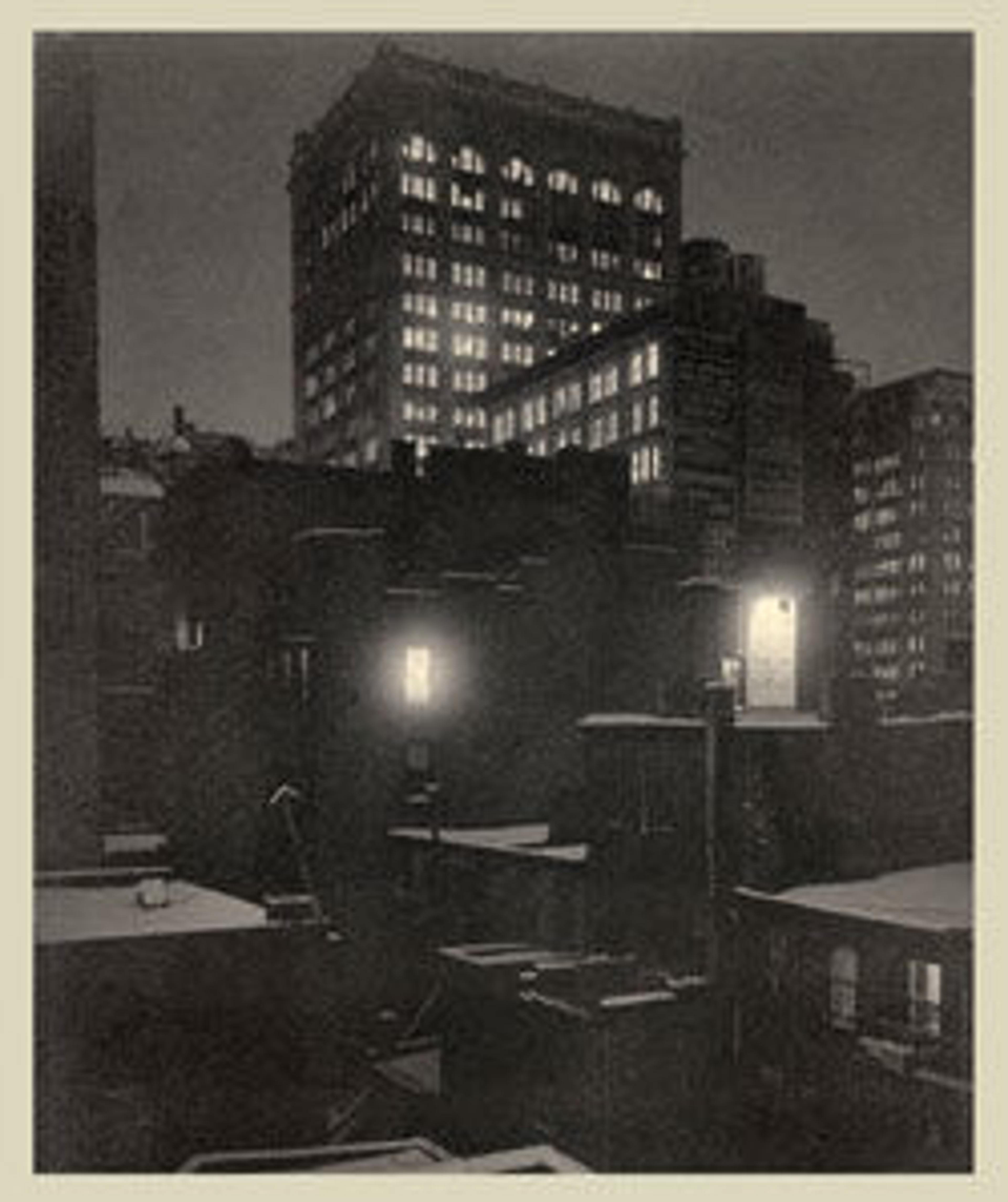Harold Greengard, Twin Lakes, Connecticut
Less than a decade after being introduced to photography by the social reformer Lewis Hine in 1907, Strand had explored the soft-focus pictorialist style, absorbed the ideas of the European avant-garde, and developed his own boldly modern and distinctly American photographic vision.
During the summer of 1916, at the house his family rented every year in Twin Lakes, Connecticut, Strand used the porch as his studio and photographed ordinary objects borrowed from the kitchen or simply the shadows of the porch railings. Experimenting with radical camera angles and photographing at close range, he created abstractions that were elegantly poised and extraordinarily original. The same innovative spirit inspired this unique portrait of Strand's best friend, Harold Greengard, whose smart figure cuts a dynamic diagonal across a flattened field of muted, indistinct planes.
The spontaneous quality of this photograph—made a decade before the proliferation of the hand-held camera and the snapshot—testifies to Strand's skill in achieving the "living expression" he sought while revealing the natural ease between himself and his subject. The photograph also heralds the remarkable immediacy and naturalism of the candid portraits of New York street people he would make only a few months later.
During the summer of 1916, at the house his family rented every year in Twin Lakes, Connecticut, Strand used the porch as his studio and photographed ordinary objects borrowed from the kitchen or simply the shadows of the porch railings. Experimenting with radical camera angles and photographing at close range, he created abstractions that were elegantly poised and extraordinarily original. The same innovative spirit inspired this unique portrait of Strand's best friend, Harold Greengard, whose smart figure cuts a dynamic diagonal across a flattened field of muted, indistinct planes.
The spontaneous quality of this photograph—made a decade before the proliferation of the hand-held camera and the snapshot—testifies to Strand's skill in achieving the "living expression" he sought while revealing the natural ease between himself and his subject. The photograph also heralds the remarkable immediacy and naturalism of the candid portraits of New York street people he would make only a few months later.
Artwork Details
- Title: Harold Greengard, Twin Lakes, Connecticut
- Artist: Paul Strand (American, New York 1890–1976 Orgeval, France)
- Date: 1916
- Medium: Silver-platinum print
- Dimensions: Image: 24.2 × 31.6 cm (9 1/2 × 12 7/16 in.)
Sheet: 24.9 × 32.3 cm (9 13/16 × 12 11/16 in.)
Mount: 28 × 33.9 cm (11 in. × 13 3/8 in.) - Classification: Photographs
- Credit Line: Ford Motor Company Collection, Purchase, Joseph Pulitzer Bequest and The Horace W. Goldsmith Foundation Gift through Joyce and Robert Menschel, and Gift of Ford Motor Company and John C. Waddell, by exchange, 1997
- Object Number: 1997.25
- Rights and Reproduction: © Aperture Foundation, Inc., Paul Strand Archive
- Curatorial Department: Photographs
More Artwork
Research Resources
The Met provides unparalleled resources for research and welcomes an international community of students and scholars. The Met's Open Access API is where creators and researchers can connect to the The Met collection. Open Access data and public domain images are available for unrestricted commercial and noncommercial use without permission or fee.
To request images under copyright and other restrictions, please use this Image Request form.
Feedback
We continue to research and examine historical and cultural context for objects in The Met collection. If you have comments or questions about this object record, please contact us using the form below. The Museum looks forward to receiving your comments.
